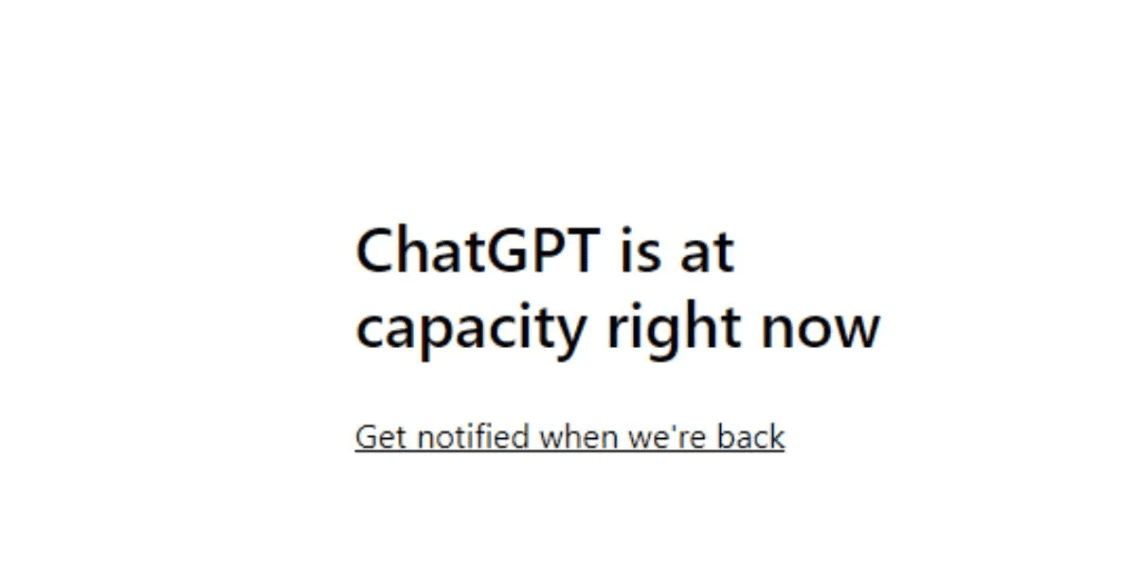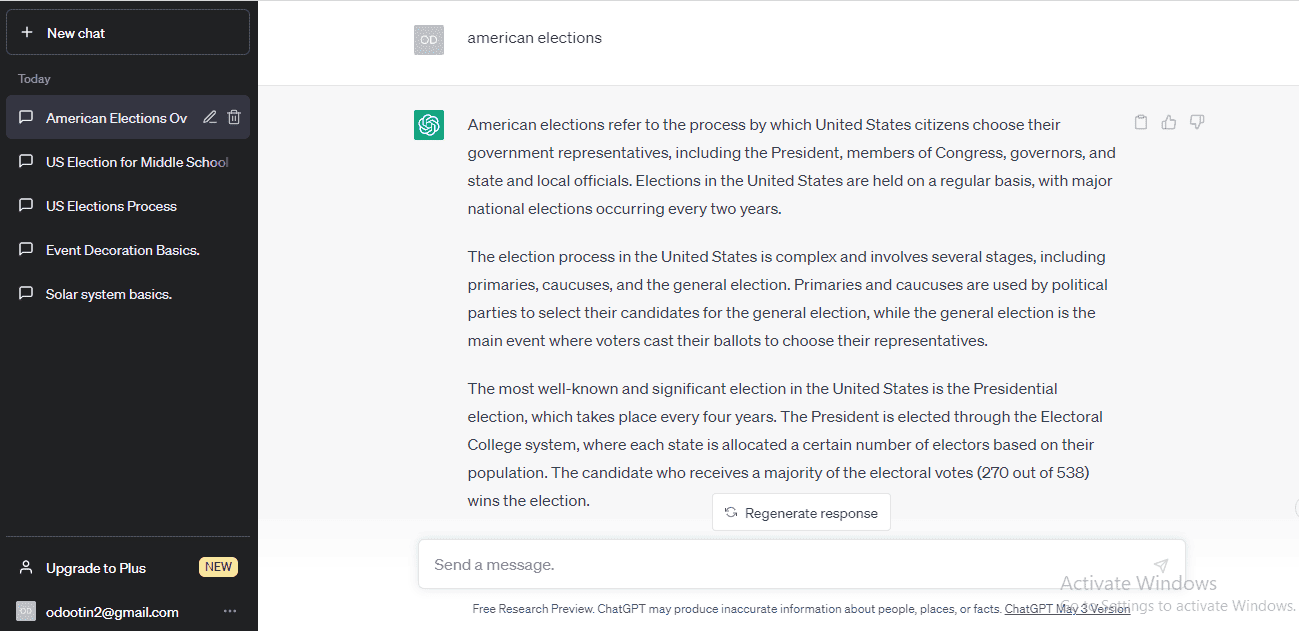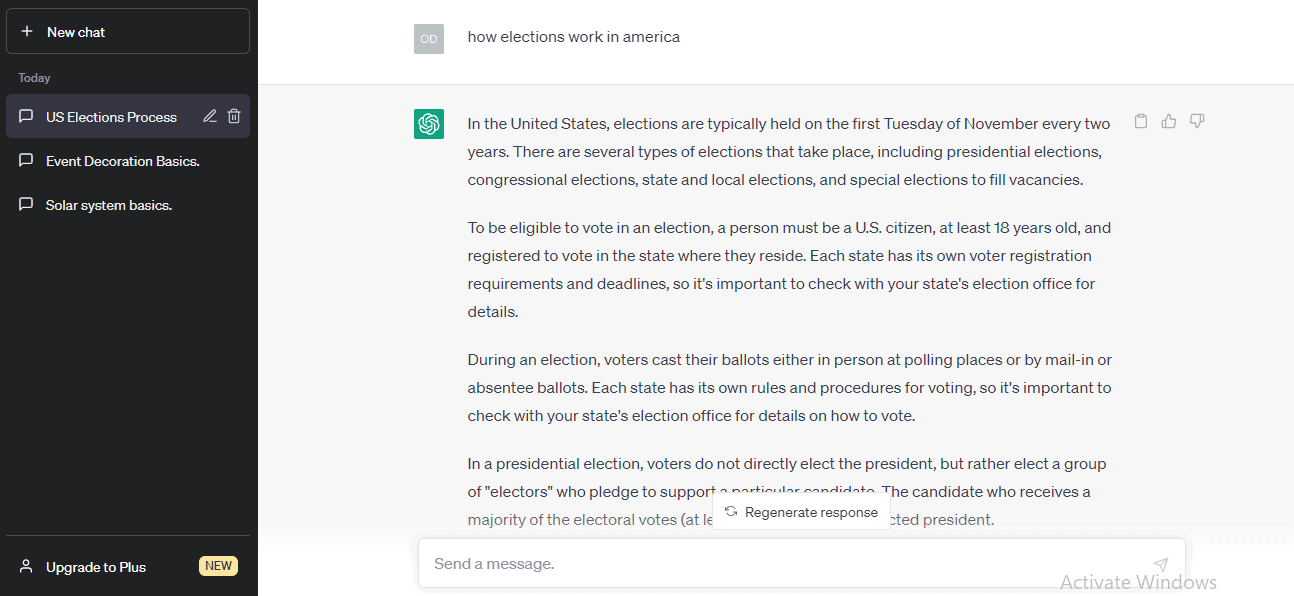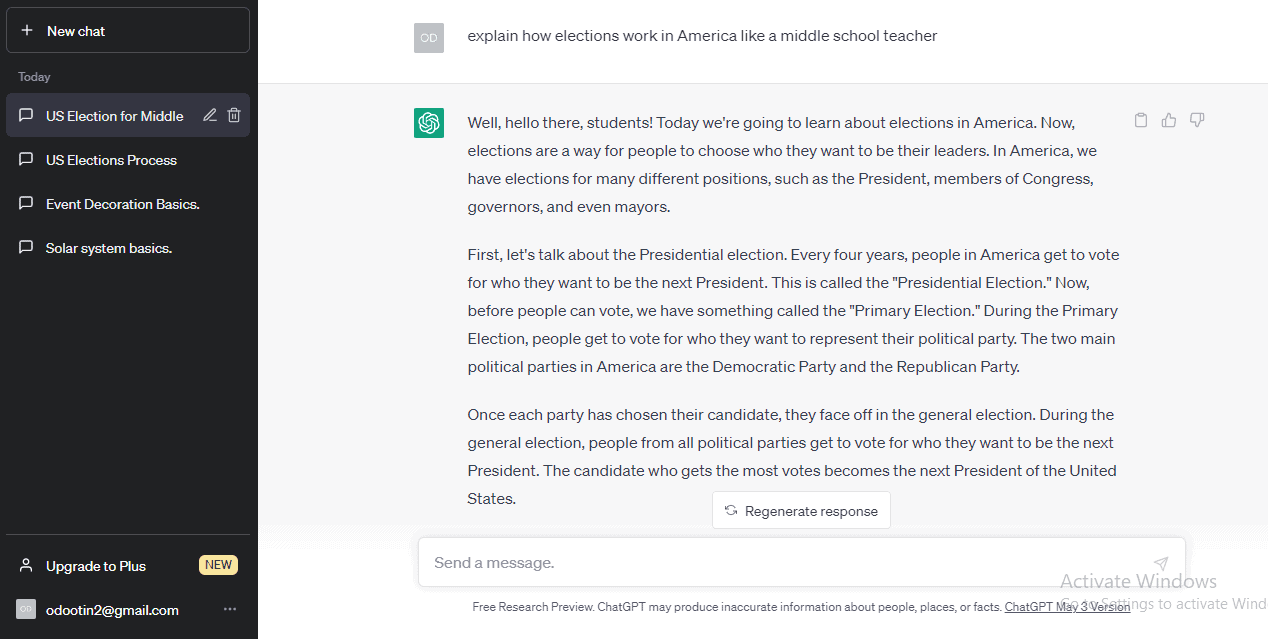Since its release to the public in November 2022, the ChatGPT AI chatbot has taken the world by storm. This popularity is largely due to its revolutionary potential.
Unlike other pre-existing AI chatbots like the Quillbot AI (Paraphrasing) that can only perform a defined set of related tasks, ChatGPT is highly versatile.
You can ask the chatbot any questions and get detailed answers. It can write novels, code, and detailed articles. It can be used for SEO and has even passed the bar and MBA exams of prestigious universities.
OpenAI’s platform is, without a doubt, the harbinger of the next era of technological innovation. So, how can you start leveraging the potential of the revolutionary artificial intelligence platform?
In this article, I will show you how to access ChatGPT and explain the platform’s limitations.
Can I Access ChatGPT Free?
You can use ChatGPT-3 for free, but you need a ChatGPT Plus subscription to access ChaptGPT-4. The ChatGPT Plus subscription costs $20 per month, while you just need to create an OpenAI account with your Google or Microsoft account to use ChatGPT-3 for free.
Is ChatGPT Available For Mobile?
There is currently no official ChatGPT app, and you must access the chat.openai.com website via your Safari or Chrome web browser.
What Is Needed To Access ChatGPT
- The Edge Browser — you will need the Microsoft browser if you want to access ChatGPT-4 without having to pay for ChatGPT Plus. The browser also gives you access to Bing Chat which is powered by GPT-3.5
- Subscription Fee — the premium ChatGPT Plus costs just $20, but the experience is vastly superior to that of ChatGPT-3. You get faster response times, access to more features, and, most importantly, access to ChatGPT-4.
How To Access ChatGPT: Step-By-Step Instructions
ChatGPT (Chat Generative Pre-trained Transformer) is a natural language (LLM) AI bot, and its neural networks were trained on huge quantities of web content, including articles, books, social media, websites, and forums.
That process was supervised by human trainers who provided feedback to help finetune the AI’s understanding of context and human interactions.
The company also built a text-to-image generator DALL-E, and you can use it to create images and art. All you need to do is describe what you want to create in natural language, and it will draw it for you.
What I will be covering in this section is how you can access and use the ChatGPT chatbot to perform tasks and get answers to your questions.
- Set up a ChatGPT account
- Set a task for the chatbot
- Know its limitations
- Leverage ChatGPT Plus
- Explore other ChatGPT-based tools and platforms
Step 1: Set Up A ChatGPT Account
You will access the chat.openai.com website to create your account. Enter your email address and input your phone number.
You will be given a confirmation number that you will use to complete your registration. Make you go through the instructions as well as information about the limitations of the platform.
If you don’t want to keep going back to the OpenAI website each time you want to use the platform, you can save the website as an app on your Edge browser.
If you are using an iMac, the MacGPT app lets you access the AI platform directly from your menu bar. You can also use Siri shortcuts.
On smartphones, you will have to use your phone browser to access the chatbot. There are also several apps on the Android and iOS stores that leverage the AI platform, including Genie, ChatOn, and Perplexity on iPhone.
Android users can use apps like Nova, ChatSonic, and Open Chat.
At this point, I should address the “ChatGPT at capacity now” error. The notice comes up when the number of users (volume of traffic) at that point in time exceeds the capacity of OpenAI’s servers.

This problem was particularly acute during the early months, but it seems the company has now learned to predict user demand better. It can still happen from time to time, though, and that’s why I feel I should touch on it.
Step 2: Set A Task For The Platform
To use ChatGPT, all you need to do is type your question or instructions, and you will get the needed information.
The platform supports a wide range of languages, but it is primarily trained in the English language.

You have to be creative when using prompts on ChatGPT. If you type in a prompt that doesn’t get you the exact answer you are looking for, you can tweak your instructions to get a different answer. For example, the query “American elections ” can be tweaked to “explain how elections work in America.”

If you want to get a different context. You can go further and modify the question, “Explain how elections work in America like a middle school teacher.”

So, essentially you can keep tweaking your questions until you get the desired result. All of your chats (inputs) will show up in the sidebar, and you can go back to them later if you wish.
Off course, the platform’s capabilities are not limited to Q&As, and it does so much more.
It is particularly good at writing essays. The one drawback of using ChatGPT for creative writing is plagiarism. It cannot fact-check itself to check for copyright violations and errors. If you are using it for this purpose, be sure to use other tools to edit your work properly.
Other uses of the AI chatbot include:
- Spelling and grammar correction: you can prompt it to check your text for grammatical errors, and it will respond by asking you to paste in the text. Once you do that, it will make the needed changes to your document.
- Emails and subject lines: you can prompt it to write emails on your behalf and specify your word count. Your instructions must be descriptive, and you must set the parameters you want.
- Language translation: you can ask it to translate any English text into other languages, including French, Spanish, German, Italian, etc.
Step 3: Know Its Limitations
Some of the capabilities of the platform are simply mind-blowing, but it is still not perfect, largely because of its machine-learning nature.
There can be gaps in its knowledge base, especially the GPT-3.5 version, which only has information about world events after 2021.
Another limitation is the number of words and characters it can output per query. It usually stops after 500 words, although if prompted to keep going, it will add more words (up to a 3000 words limit).
Also, it only works with text, and if you want to generate images, you will have to use either the DALL-E platform or the Bing Image Creator.
The biggest issues, though, are its use in essay writing and how it is perceived as a threat to people’s jobs, and the rights of authors that own copyrighted material.
A popular example is two songs by Drake and The Weekend that were later discovered to have been created by using artificial intelligence. The situation is further compounded by the fact that the legal implications of AI-dubbed content are still unclear.
More commonly, though, the use of ChatGPT for essay writing by students and its impact on education is what is generating the most concern.
OpenAI recently released a plagiarism detection tool that can help teachers and companies detect when people are submitting AI-generated work.
Step 4: Leverage ChatGPT Plus
The premium version of ChatGPT doesn’t only give you access to GPT-4, it also allows you to process up to 25,000 words.
It provides more factual information, and you will retain your access to the platform even during peak hours. You can even input visuals instead of just text in GPT-3.
Also, when the expected GPT-4.5 is finally released, it will likely be released first on ChatGPT Plus long before it is made available on the free version of the chatbot. The existence of the rumoured GPT-5 has been denied by the company.
Upgrading to ChatGPT Plus is easy. Just click the “Upgrade to Plus” tab at the bottom of the left sidebar on your dashboard.

The reason for the $20 fee is that the company is spending so much money on server hardware, electricity, software updates, and other running costs. The idea is that creating a premium tier will help OpenAI cover operating expenses.
Step 5: Explore Other ChatGPT-Based Tools and Platforms
There are lots of popular companies that have integrated the AI tool into their platforms, and it is even now available in Slack and Discord.
This section is about tools that have GPT’s technology built into them, and they include:
- Bing Chat: this platform combines the search features of Bing together with the chat-based interface of the AI platform to create something truly unique. It uses the same language model as ChatGPT, and you can ask it natural language questions, unlike what is applicable with traditional search engine tools.
- ChatGPT Plugins: this is based on the ChatGPT API that lets developers build extensions and plugins for ChatGPT to create new tools and functions. You will have to join the waitlist to access the API.
- Microsoft Productivity Tools: the tech juggernaut has invested a lot in ChatGPT, and given how new AI features are contributing to the revival of its Bing search engine, it is safe to say that the company is reaping the rewards. The ChatGPT revolution has now been extended to other Microsoft tools, including Teams, Office 365, Outlook, and more.
Similar Tutorials To Check Out
- How To Write A ChatGPT Essay: this article will show you how to instruct the AI platform to help you write detailed essays and the steps you must take to edit your content to make it feel less like computer-generated content.
- How To Use A ChatGPT Extension: discover how to install the ChatGPT Merlin Chrome extension and how to use it on your web pages.
- How To Fix A ChatGPT Access Denied Error: this article will show you reasons why the error code may be triggered and ways you can resolve the issue.
Wrapping Up
It’s clear that the potential of the ChatGPT platform is immense, and it will be well worth your time to use the instructions outlined in this article to try it out yourself.
It’s an amazing piece of tech that will only keep improving as more updates are rolled out. It can be transformative for students, businesses, developers, and just about anyone in any line of work.
Luckily, the company recognizes some of the dangers of AI, and it is trained to reject queries and prompts that are hateful or discriminatory.
When you have the time to try it out, please share your observations about its strengths and weaknesses in the comments section.






